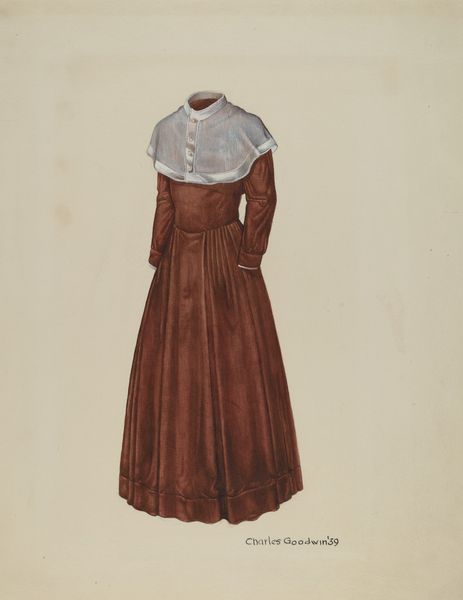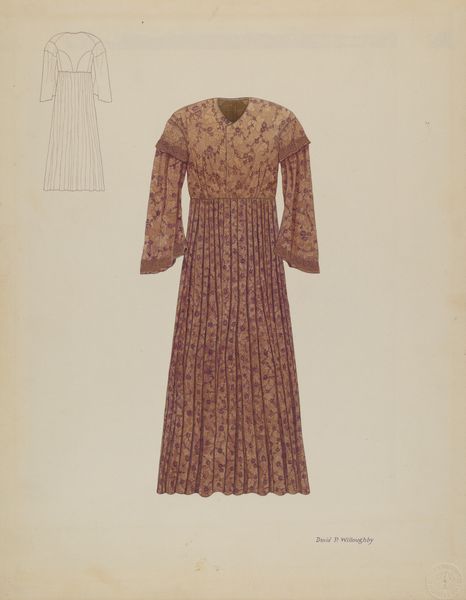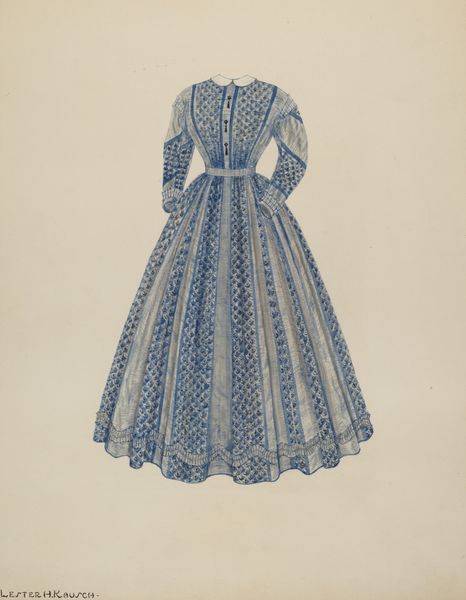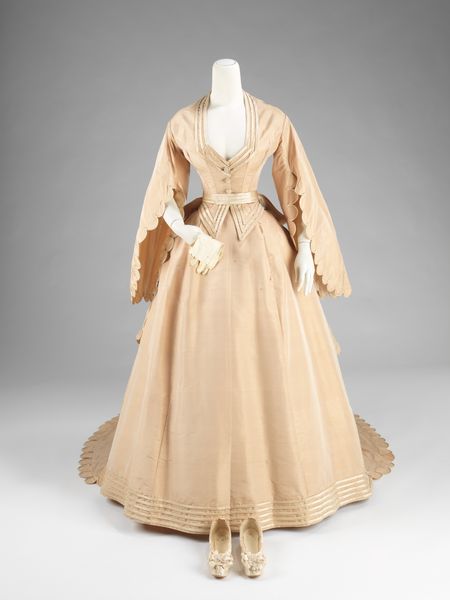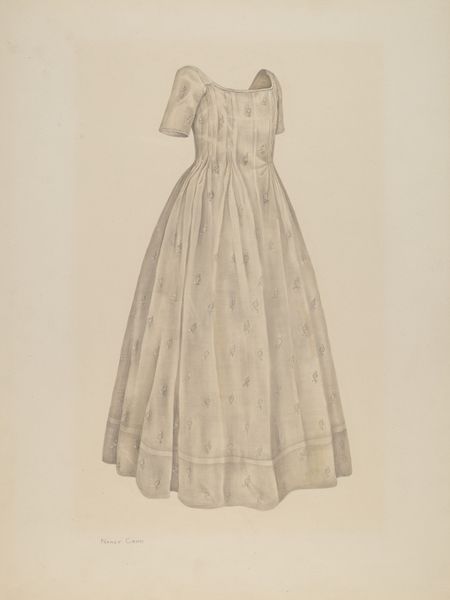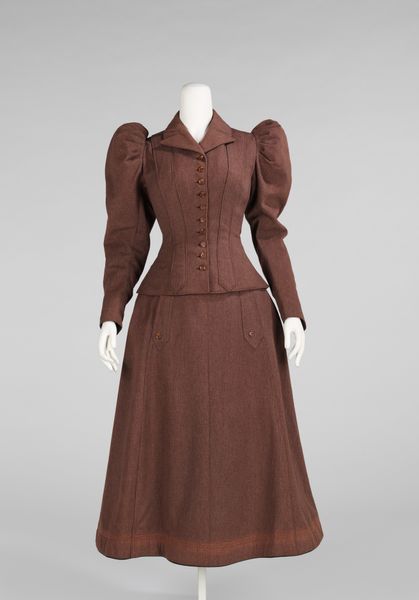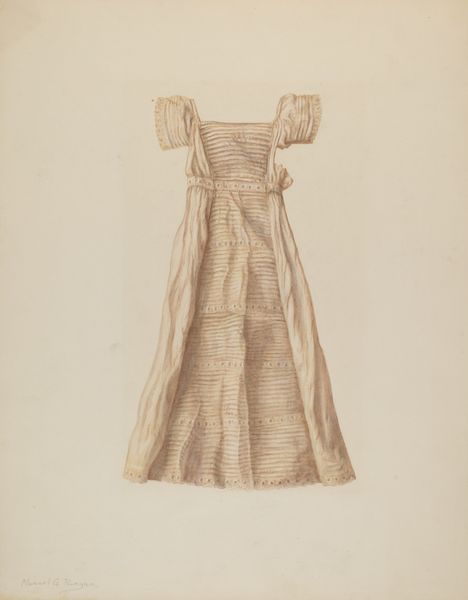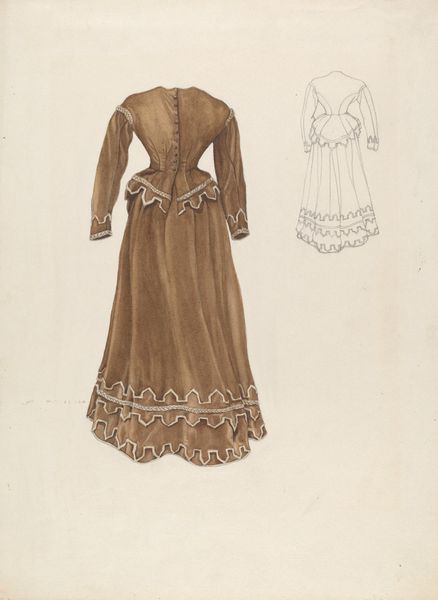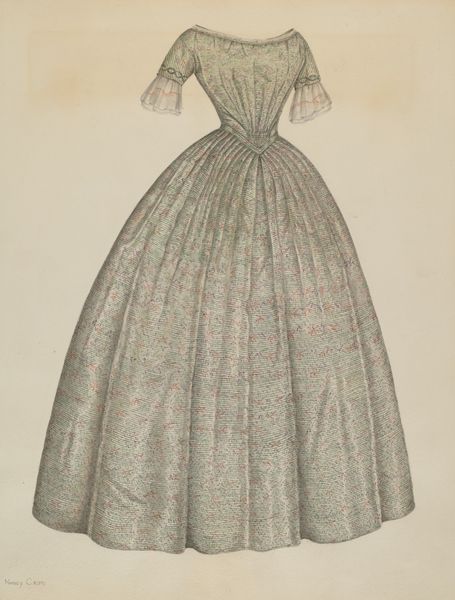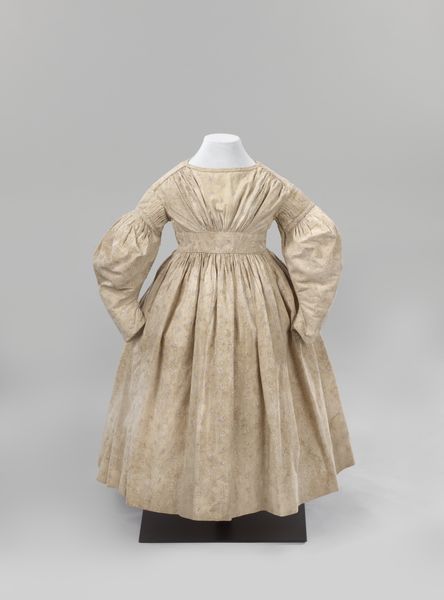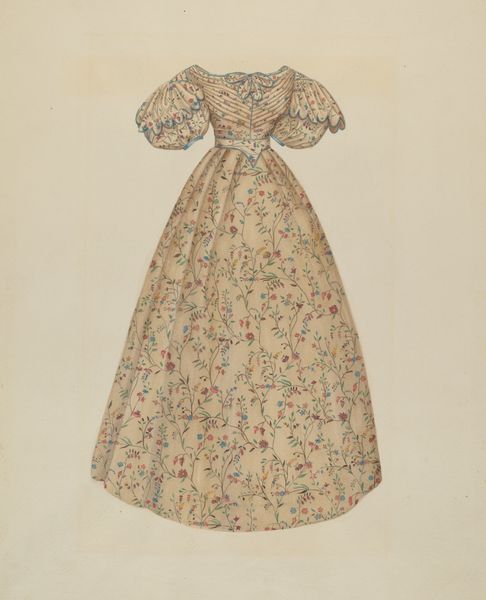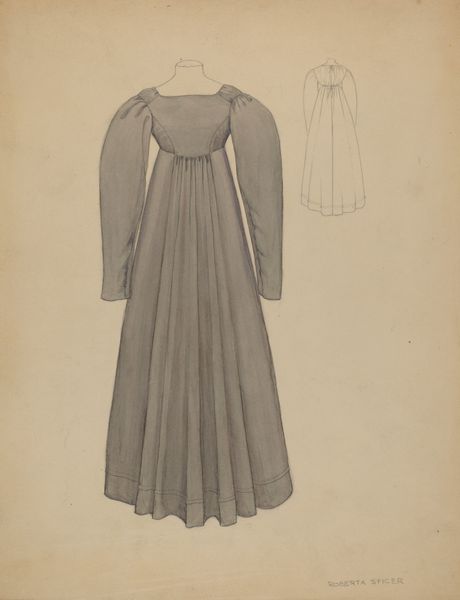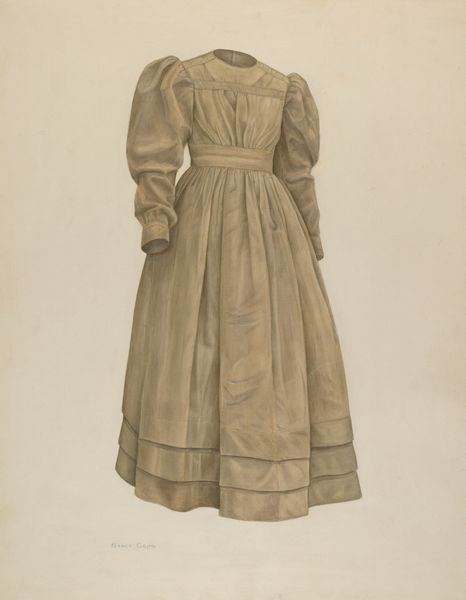
drawing
#
fashion design
#
drawing
#
light pencil work
#
fashion mockup
#
pencil sketch
#
historical fashion
#
pencil drawing
#
wearable design
#
fashion sketch
#
fashion model stance
#
clothing design
Dimensions: overall: 55.2 x 44.7 cm (21 3/4 x 17 5/8 in.)
Copyright: National Gallery of Art: CC0 1.0
Editor: This is "Bishop Hill: Dress," a pencil drawing from around 1938 by H. Langden Brown. There's something quite haunting about it – a dress, rendered so meticulously, but without a person inside. What strikes you about this work? Curator: The absence is potent, isn't it? This dress, divorced from its wearer, becomes a symbol. The lines, so carefully rendered, speak of constraint and expectation, reflecting a specific societal role women occupied. Notice the high neckline, the long sleeves – modesty emphasized. Editor: So, the dress isn't just clothing, but a visual representation of societal expectations? Curator: Precisely! Think about the material suggested by the sketch. The slight sheen, the vertical stripes - possibly a heavy silk or a sturdy cotton. These choices would have dictated the wearer's movements, her posture, her very presence in the world. This fashion sketch, therefore, becomes a mirror reflecting the cultural landscape of the late 1930s. Can you sense how the fabric dictates decorum and, on some level, destiny? Editor: I hadn't considered that, but I do now. It's less about fashion, more about… being fashioned. Curator: Indeed. Consider Bishop Hill itself. This dress design connects to a very particular utopian and religious social experiment. Do you notice any echoes between the strict dictates of this community and the message sent by this very proper garment? The symbols, subtle as they are, reveal more about what *should* be visible versus what truly *is.* Editor: This makes me think about how even seemingly simple images carry so much cultural weight. It’s fascinating. Thanks for opening my eyes to the dress's complex language. Curator: And thank you for helping me see its echoes in the present day!
Comments
No comments
Be the first to comment and join the conversation on the ultimate creative platform.
